Students gain valuable field experience while supporting NASA SnowEx research
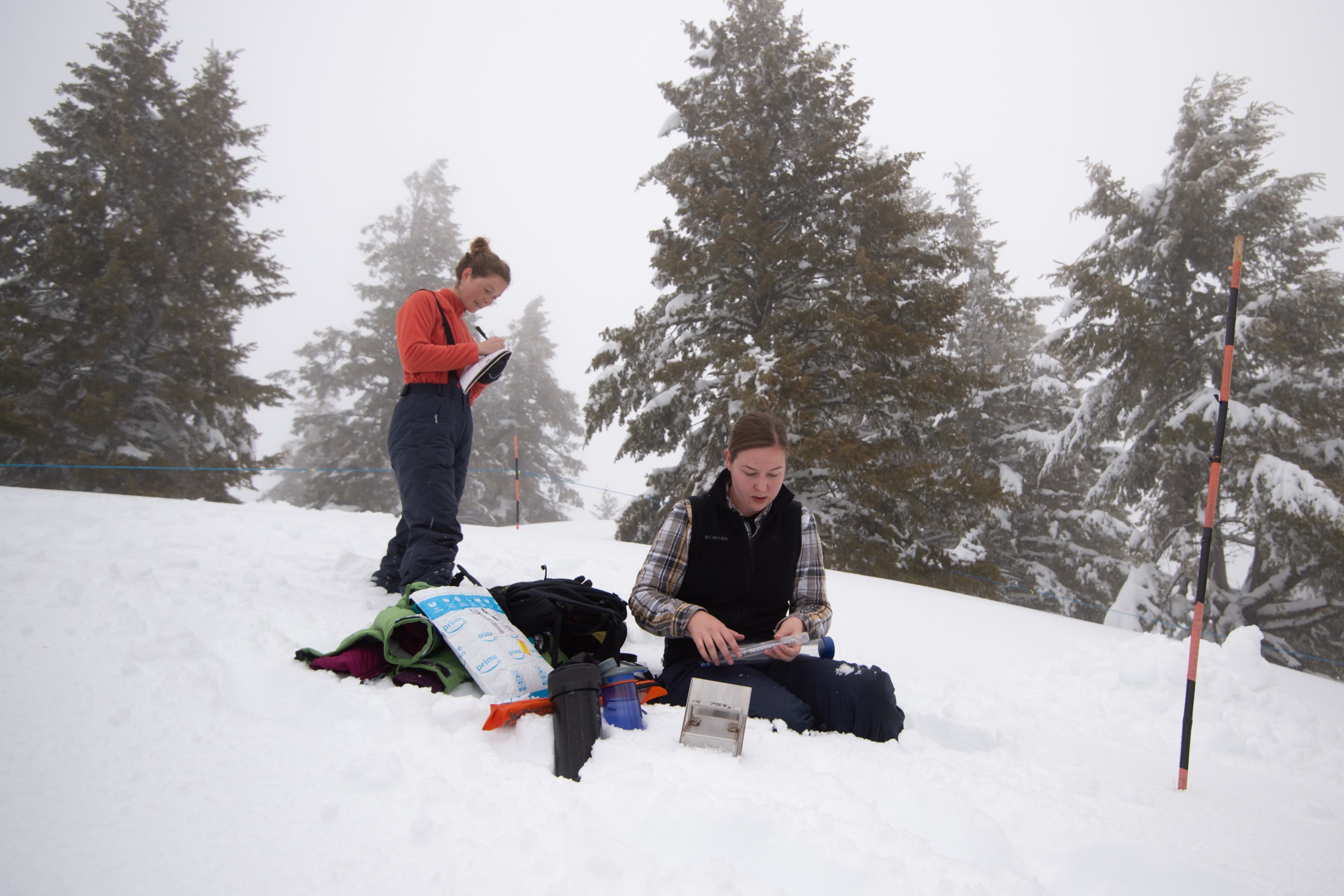
Plenty of Boise State students enjoy winter weekends skiing or snowboarding for recreation. But when geoscience graduate students Allison Vincent and Isis Brangers pull out their ski poles and ride the chairlift up Bogus Basin, they do it for science.
“Snow is important, especially out here in the western U.S. because we are in a very dry climate and the majority of our precipitation falls in wintertime as snow,” explained Vincent. “What you see here today [on Bogus Basin] is what will eventually end up in our underground aquifers and in the Boise River.”
The presence of snow and society’s understanding of it is becoming more precious with every passing day. The cycle of melting and refreezing snow and ice is essential not only to Earth’s climate, it also directly impacts the availability of drinking water, as well as many essential industries such as agriculture and energy production.
However, measuring the snow-water equivalent for a large area is a technically and logistically complicated (and taxing) task, especially given the varieties of terrain where snow may fall. From easily navigable plains to treacherous mountain passes, it takes both specialized and expensive equipment – as well as the tremendous efforts of dedicated researchers on foot – to map, collect and analyze this data.
This video is available with captions and a transcript.
Currently, to be able to predict the snow melt and run-off rate for an average year requires the analysis of 30 year’s worth of data collected from more than 800 different sites by the United State Department of Agriculture Natural Resources Conservation Service.
But there’s a problem.
“There is really no ‘average’ now with climate change,” said H.P. Marshall, an associate professor of geophysics at Boise State University. “The estimates are less and less accurate the farther we get from the 30-year average.”
According to Marshall, 70 to 80 percent of the western U.S.’s water supply is snow. As a scientist of the cryosphere (or parts of Earth that are characterized by frozen water, such as snow or ice caps), he is more familiar than most of the impact climate change has on snow and ice.
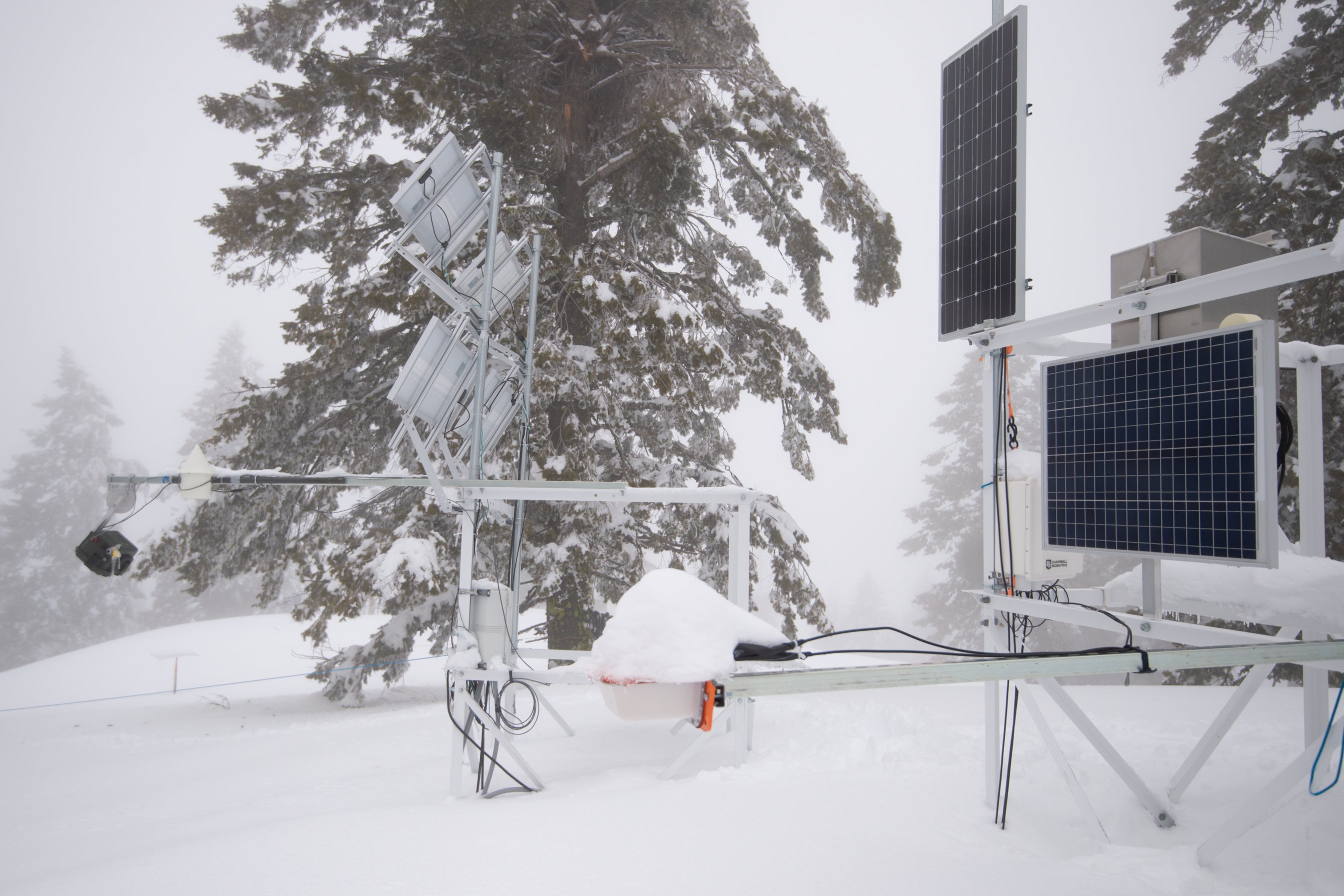
NASA SnowEx
To battle this issue, Boise State faculty and students are working with NASA on a large-scale initiative called SnowEx.
Snow-Ex, a five-year program that began in 2017, uses surveillance by helicopters and planes, coordinated with field work, to collect snow data. This data is collected through digging snow-pits, ground-based radar, remote sensing and light detecting and ranging – otherwise known as lidar, which functions by sending out a beam of light and measuring how long it takes for it to travel to a destination and return.
As the SnowEx project scientist, Marshall coordinates the research and data collection from December 2019 to May 2020 by 13 different research teams positioned across Idaho, Utah, California, Colorado and New Mexico at 13 research sites. SnowEx relies on more than 100 participants from more than 20 institutions to conduct this work.
“What we can currently do from space is know where snow covered areas are, but not the quality or volume of water,” explained Marshall. “The goal of NASA SnowEx is to get us to a place where we know what combination of sensors should go on a satellite that could do this all over the globe on a regular basis.”
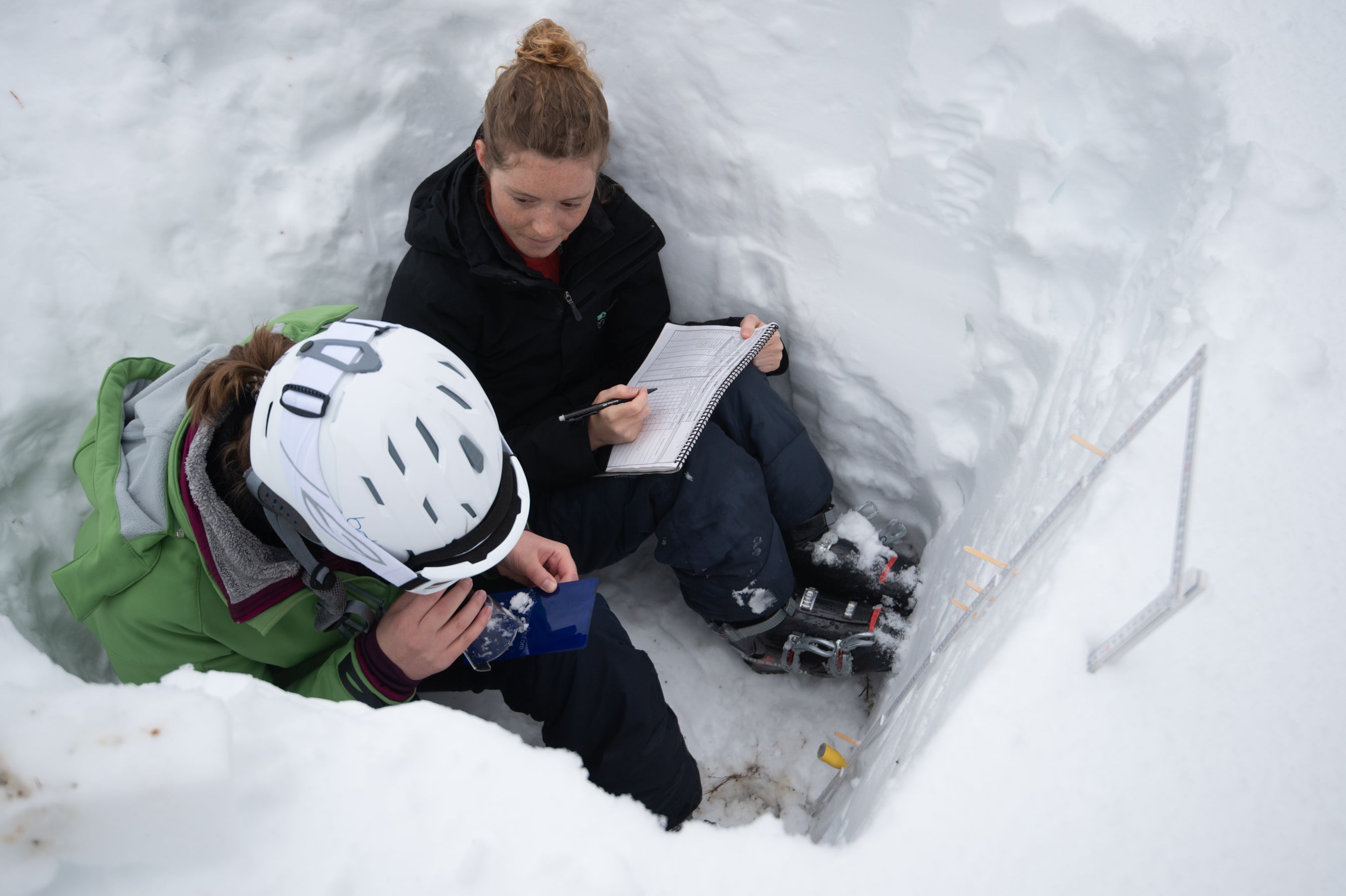
Last month, SnowEx began its second-largest airborne campaign. Many Boise State students currently are helping by collecting data from the ground, while gaining field experience. Marshall recently returned from leading a group of 30 scientists performing snow observations on Colorado’s Grand Mesa during overflights from five different aircraft. SnowEx 2020 will include season-long time series with sites in five different states and the intensive three-week experiment on Grand Mesa.
In addition to Vincent and Brangers, students also working at Boise State research sites at Bogus Basin, Mores Creek Summit and Banner Summit to support SnowEx include:
- Megan Mason, geophysics master student
- Maggi Kraft, geoscience doctoral student
- Chago Rodriguez, geophysics doctoral student
- Tate Meehan, geophysics doctoral student
- William Rudisill, geoscience doctoral student
- Jukes Liu, geophysics master student
- Colton Colbert, geophysics master student
- Kate Bollen, a geophysics master student
- Bradford Minich, GIS student
- Cara Piske, geophysics master student
- Peter Youngblood, geoscience master student
- Amad Hojatimalekshah, computing doctoral student
- Josh Morrel, geoscience master student
- Daniel Murray, geoscience undergraduate
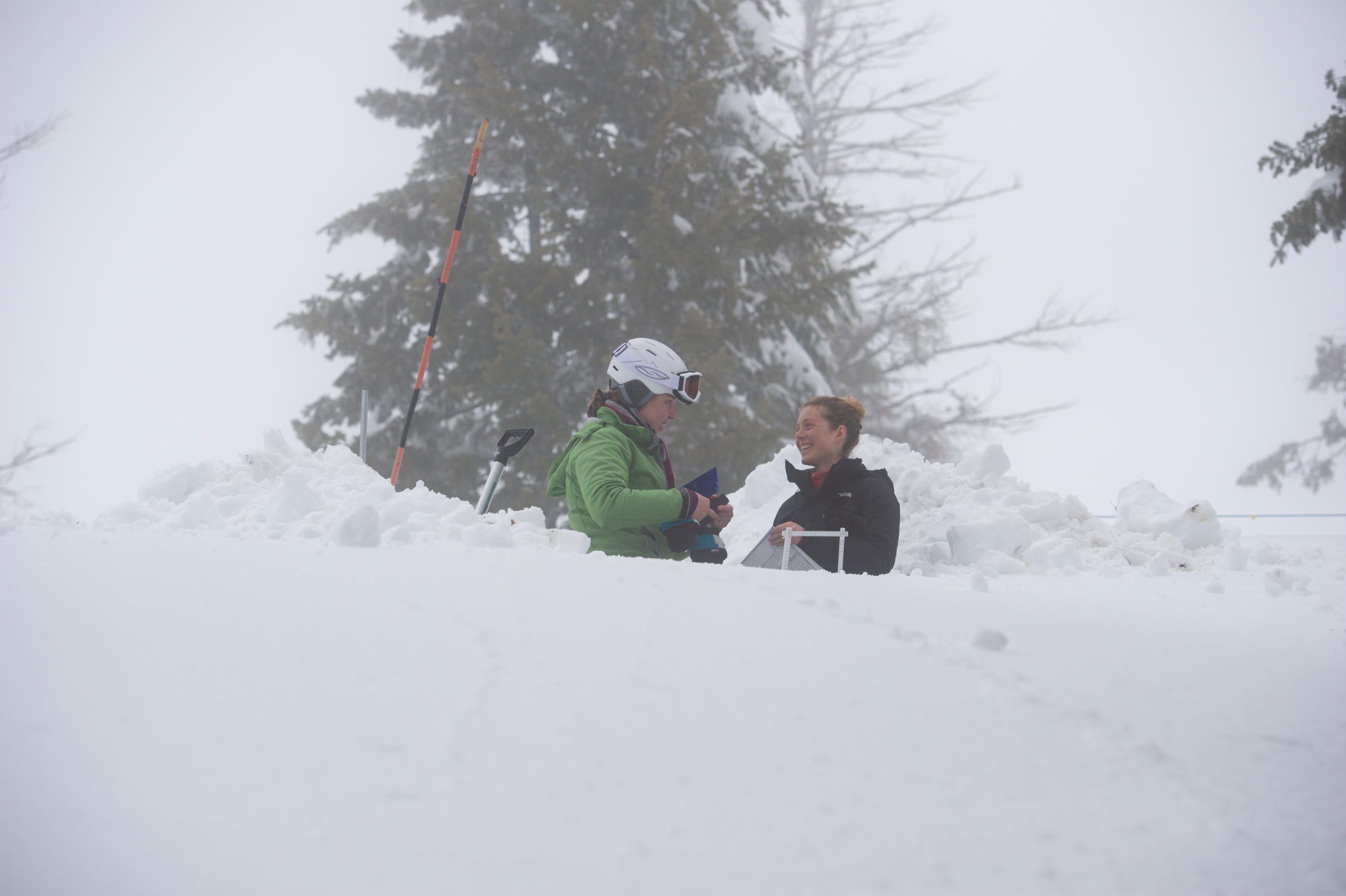
These students dig snow pits to take density and temperature measurements, as well as make notes on layers of melting and refreezing snow (called stratigraphy). Brangers is pursuing her doctoral degree at Katholieke Universiteit Leuven in Belgium; her university is working with Boise State to support her research and field work in Idaho.
“For my PhD, we work together with Boise State because of their expertise and awesome facilities for snow research,” said Brangers. “By developing a method to measure snow, we’re trying to better simulate the runoff and water availability during the melting season to improve water management methods. It’s important to manage the water resources we have in an intelligent way.”
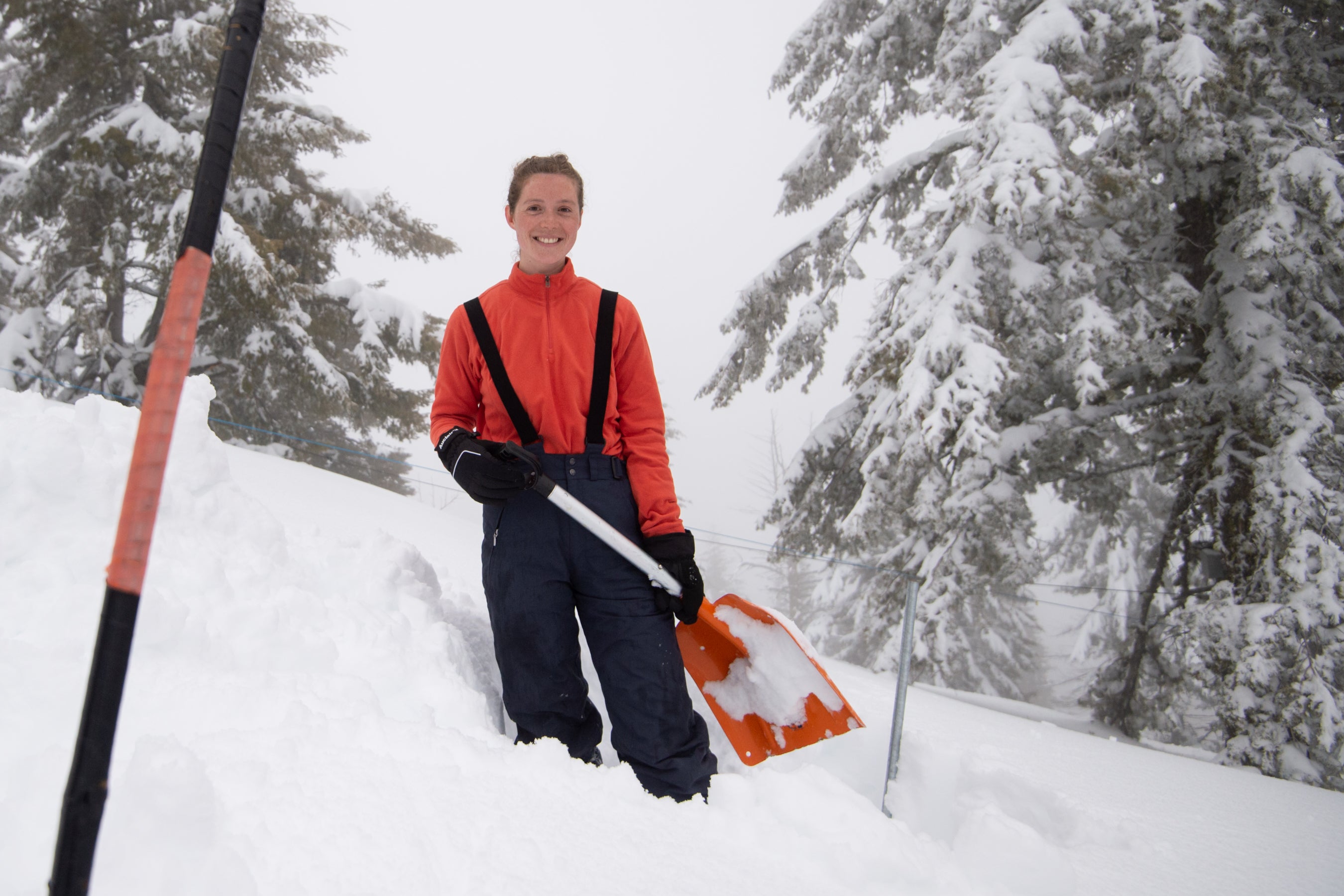
Several Boise State alumni who now occupy research positions also are involved, including Thomas Van der Weide, Tamalaku Pe, Thomas Otheim and Josh Enterkine.
Boise State geoscience faculty who also are involved in the NASA SnowEx program include professor Nancy Glenn, assistant professor Ellyn Enderlin, department chair Jim McNamara and associate professor Lejo Flores, as well as their individual student research teams.
Support for this research is provided by the Terrestrial Hydrology Program under NASA. Collaborating institutions include Jet Propulsion Lab, NASA Goddard Space Flight Center, the U.S. Army Cold Regions Research and Engineering Laboratory, the USFS Rocky Mountain Research Station, ATA Aerospace, local partner Winter Wildland Alliance’s SnowSchool and a host of universities throughout the western U.S.
-By Brianne Phillips
